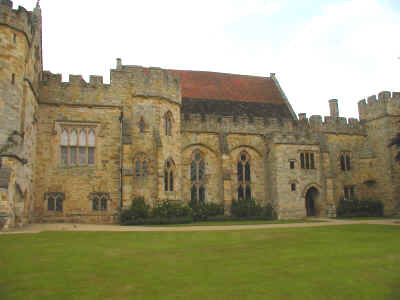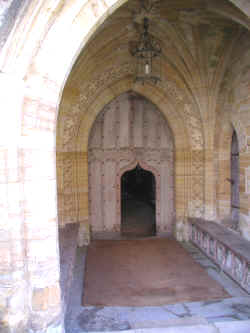Medieval Manor Houses
The wealthy people who found themselves at the top of the Feudal System in Medieval England owned manor houses. While few remain today, many Tudor and Stuart manor houses still have parts that were constructed in medieval times and display original architecture.
The manor houses lived in by medieval lords were constructed from natural stone and built to last. Peasants, on the other hand, lived in huts made of wattle and daub, which were designed to clearly display their poverty to those who ranked above them.
The manor houses of this time were smaller than those built by the Tudors and Stuarts, but are still thought to have been the largest buildings medieval people would have seen aside from castles and cathedrals. Penshurst Place in Kent is an excellent example of how lords designed their manors in this time, and any changes made during later periods can clearly be identified.

The medieval section of this house is dominated by the Great Hall, the exterior of which is visible in the photo above. This hall was where everyone who worked in the manor would sleep, with up to 100 people resting in there at a time in such a large manor. The lord and his family, however, would sleep in the solar, which was a private area that got its name from its large windows.
The kitchen is located to the far right in the photo, by the arched doorway, and would also contain a buttery. Food cooked in the kitchen would have been grown on the estate and this room would have its own supply of water

To ensure other members of the nobility were impressed by the manor, lords would often create a large entrance, such as the one above. Although used on a daily basis, Penshurst’s door within a door would be an important feature when it came to making a good impression on visitors, opening out into the Great Hall and making an immediate impact.
Life within a medieval manor house is thought to have been quite comfortable for the lord and his family, who would benefit from privacy. However, the house would have been very cold and draughty for all inside, requiring people to sleep on straw just to maintain heat.
It’s likely hygiene would not have been greatly improved compared to the average medieval dwelling. Although it wouldn’t have contained animals or manure, the manor would likely have failed to provide good washing facilities for workers. Toilet facilities are also not obviously included in the estate.
While there was certainly a difference in the levels of comfort experienced by peasants and lords, both groups were tied to the Feudal System. While peasants risked their lives if they disobeyed their lords, the lords and their families had to complete the tasks entrusted to them or they would risk having their estate taken from them.
See also: Building a Medieval Cathedral
MLA Citation/Reference
"Medieval Manor Houses". HistoryLearning.com. 2025. Web.
